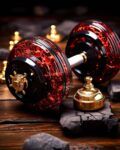In this era of virtual acceptability, we often edit our photos to get body image satisfaction. Our society has made some typical definitions of beauty, and we feel safe within the cliched bracket. Why do you need their validation? Ask yourself.
“… I wore a shirt and my
Brother’s trousers, cut my hair short and ignored
My womanliness. …
Fit in. Oh,
Belong, cried the categorizers.”
- From the poem ‘An Introduction’ by Kamala Das.
Nowadays we share positive thoughts related to the human body and beauty on social media. We know “#blacklivesmatter”, we know our grandma who was fat and short was beautiful, and our grandpa who was skinny and bald was admired by many. Then, why? Why are we still concerned about the size of our chest, breast, and waist? Why do we upload those pictures only where our skin tone looks a bit fairer? One year ago a poem by Nayab Midha became viral on social media: “Tum Khoobsurat Ho”. Here are few lines from that unbiased poem of true beauty:

“Main janti hun aisa sharirik majaak har roz udaya jata!/ Magar agli dafa, magar agli dafa jab tumhe koi mahsus karaana chahe/ Tumhe tumahaari hi nazron mein giraana chahe!/ Toh uske karib jana, muskaraana,/ Hath thamana Ya peeth thap- thapana, aur use kahena/ Meri jaan hum nahi jaante ki tumse kisi ne yeh kaha hai ya nahi/ Magar tum khoobsurat ho!/ Meri jaan main nahi jaanati ki tumse tum sabhi se kisi ne yeh kaha hai ya nahi/ Magar tum khoobsurat ho!”
Well, most of the people who shared it and made it viral are the same people who use skin filters to look fair and lovely in the world of virtual ‘Araby’. Let’s trace the root of this hypocrisy.
We all have the subconscious urge of being accepted. We feel comfortable under the shadow of acceptance of our family, our friends, our society. In this society, the majority makes the rule. If we see a lot of ‘friends’ on social media are using some filters, most of us just go with the flow and follow it. Now, if we look more deeply into the matter, we would find out that most of these trends that rule social media worship a typical definition of beauty. In April 2021 the filters that make one look like a Disney prince/princess, or some Renaissance portrait became very popular among the youth. Ironically almost all these twins of the prince, princess, and Renaissance art- models have a typical body structure, you can not find any extra 2 inches in their belly. They all have big eyes, glowing skin, perfect hair, and so on! It is okay to follow the trend, it is okay to experiment with your image, but what is more important is to appreciate the beauty that you already have. You don’t have to look like a princess, you don’t need to smile like Vinci’s Monalisa. Your uniqueness is your beauty.
Though we blame the apps and social media for making this typical definition of beauty, if we look at the image of gods and goddesses, or the ‘Dancing girl’ sculpture found in the Indus Valley Civilization, we might track down the root of this problem centuries back. After centuries, popular women’s fashion leaned towards dresses that had made a scale of standard shape and size of women’s bodies.
Though things have started to change at the beginning of the 20th century, how many celebrities do we find choosing a comfortable and simple dress over those long heavy gowns in an award function? These celebs also leave a direct impact on us through different platforms of social media. Of course, there are exceptions. We have seen the dusky and dazzling Shabana Azmi in a simple saree, catching the eyes of admirers at the Cannes Film Festival. We have heard Peter Lindberg, the German fashion photographer saying-
“I’m firmly convinced that true beauty only springs from the acceptance of oneself, from an awareness of who we really are.”
Within your heart, you are carrying thousands of faces. Let them believe that you are beautiful. You don’t have to appear in the test of shape, size, and skin tone. There is no ideal scale. Only you are your comparison. Only your eyes know how beautiful you are- in body, mind, and spirit!





